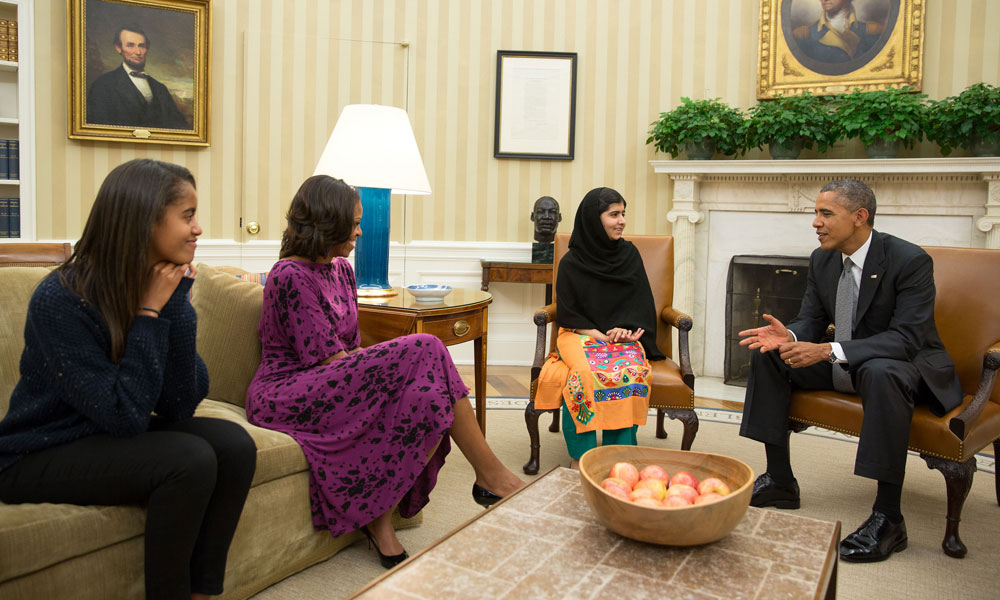
Media Groups Ask White House for a Better View
Over the years, the White House's widely-followed Flickr page has given the public a bird's eye view into the Obama administration's ins and outs. But press outlets and journalism associations say that the limited access they get to the same events show the costs of this approach.
Over the years, the White House’s widely followed Flickr page has given the public a bird’s-eye view of the Obama administration. But press outlets and journalists’ associations say the limited access they get to same events is a growing problem.
The Obama administration has been good about documenting itself: through social media, through the expanded White House website, and—most dramatically—through the use of photography.
To exclude the press from these functions is a major break from how previous administrations have worked with the press.
But it’s that latter issue that has media groups—often looking to capture candid presidential moments of their own—crying foul.
The problem: The White House has increasingly relied on its chief in-house photographer, Pete Souza, to capture the president’s daily activities in pictures. Many of Souza’s photos, which often show intimate moments due to his high level of access to Barack Obama, are shared on the administration’s Flickr page, and many have gone viral. While the White House press corps follows the president around on a daily basis, its members often get restricted or no access to the same events that the official White House photographers and videographer cover. Earlier this year, for example, the White House Correspondents Association (WHCA) criticized the administration for blocking photographer access to a round of golf President Obama played with Tiger Woods. The eroding access leads to a loss of independence for the press, media outlets say.
The response: The administration says those concerns are unfounded. “We’ve taken advantage of new technology to give the American public even greater access to behind-the-scenes footage or photographs of the president doing his job,” White House deputy spokesman Josh Earnest said during a recent news briefing, according to The New York Times. “I understand why that is a source of some consternation to the people in this room. But to the American public, that is a clear win.”
The letter: On Thursday, several media outlets and journalists’ groups sent a letter to White House press secretary Jay Carney, protesting the limits placed on media access to scheduled presidential events. The letter cites numerous recent examples—most recently Obama’s meeting with Pakistani teenage activist Malala Yousafzai—where the press received limited opportunity to photograph an event, only to later receive official White House photos of it. “The right of journalists to gather the news is most critical when covering government officials acting in their official capacities,” the letter states. “Previous administrations have recognized this and have granted press access to visually cover precisely these types of events, thus creating government transparency. It is clear that the restrictions imposed by your office on photographers undercut the president’s stated desire to continue and broaden that tradition. To exclude the press from these functions is a major break from how previous administrations have worked with the press.” The letter, which also raised First Amendment concerns, was signed by media outlets such as The Washington Post and CNN as well as WHCA, the American Society of News Editors, the Society of Professional Journalists, the Online News Association, and the White House News Photographers Association.
A rocky relationship: The Obama administration hasn’t had an easy time with the press of late, particularly since May, when the Associated Press revealed that the Justice Department had seized reporter phone records, drawing massive criticism from a number of industry groups. While that controversy led the administration to support a press shield law, it has faced hard-hitting reports that suggest its anti-leak policies are among the most stringent of any recent White House.
President Obama's meeting with activist Malala Yousafzai was among the photo-ops members of the press didn't get. (photo by Pete Souza/The White House)






Comments